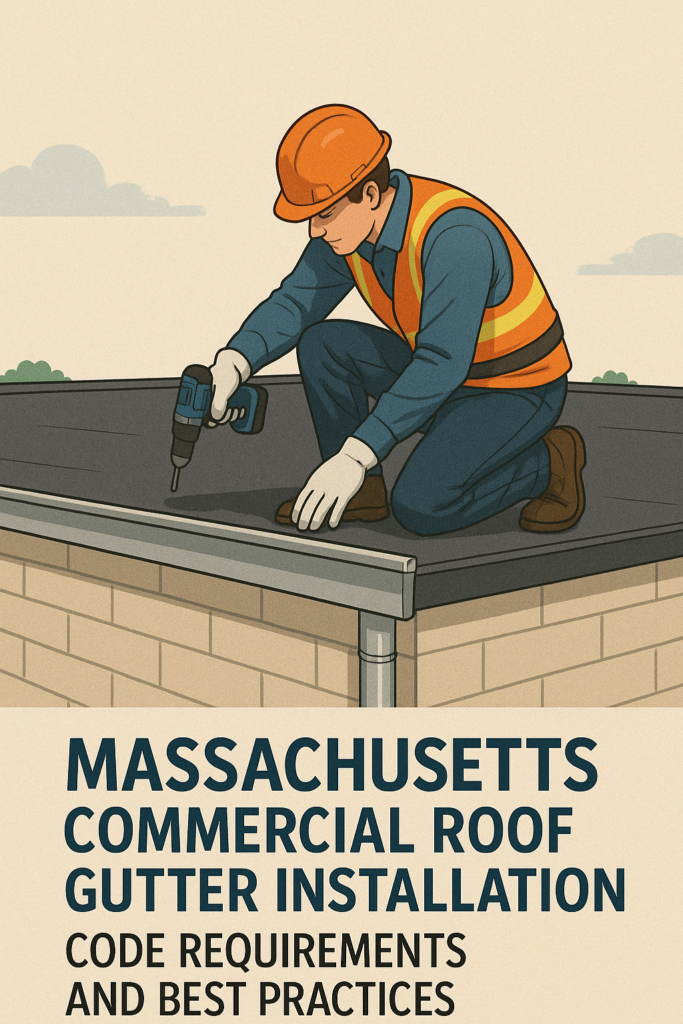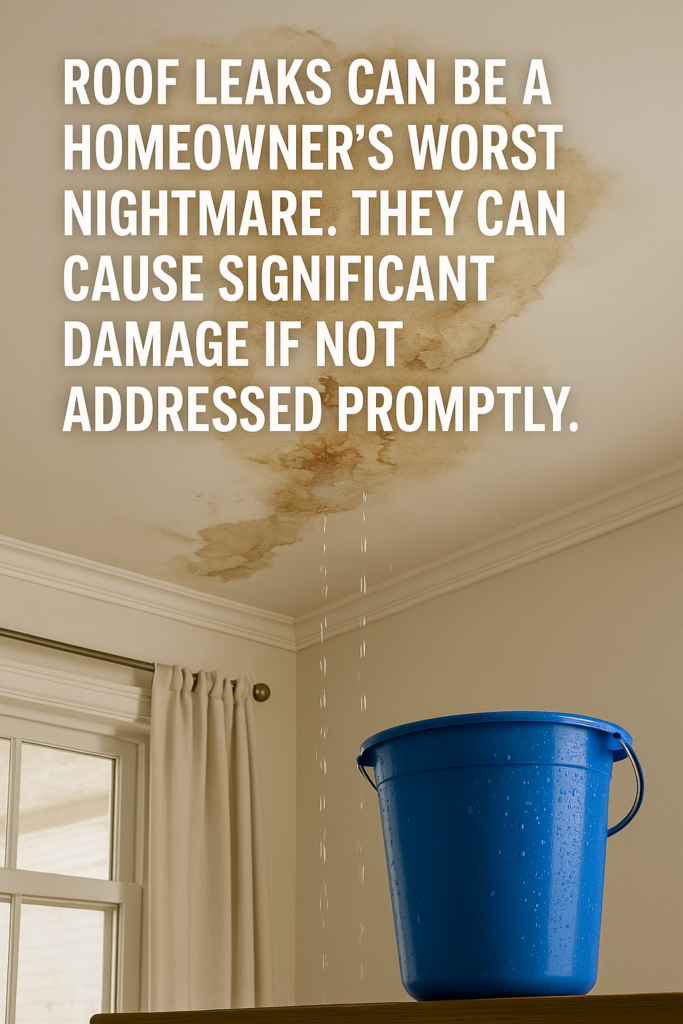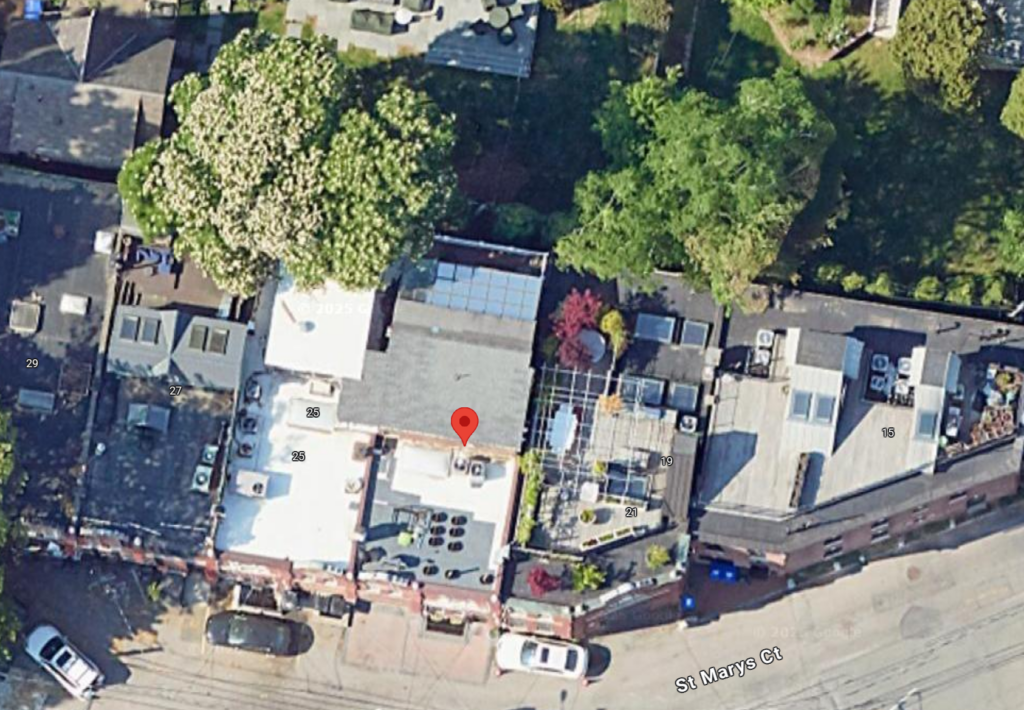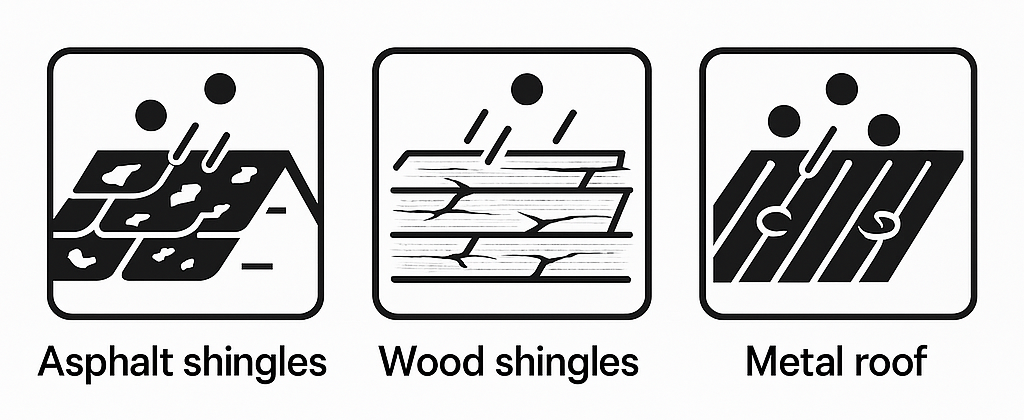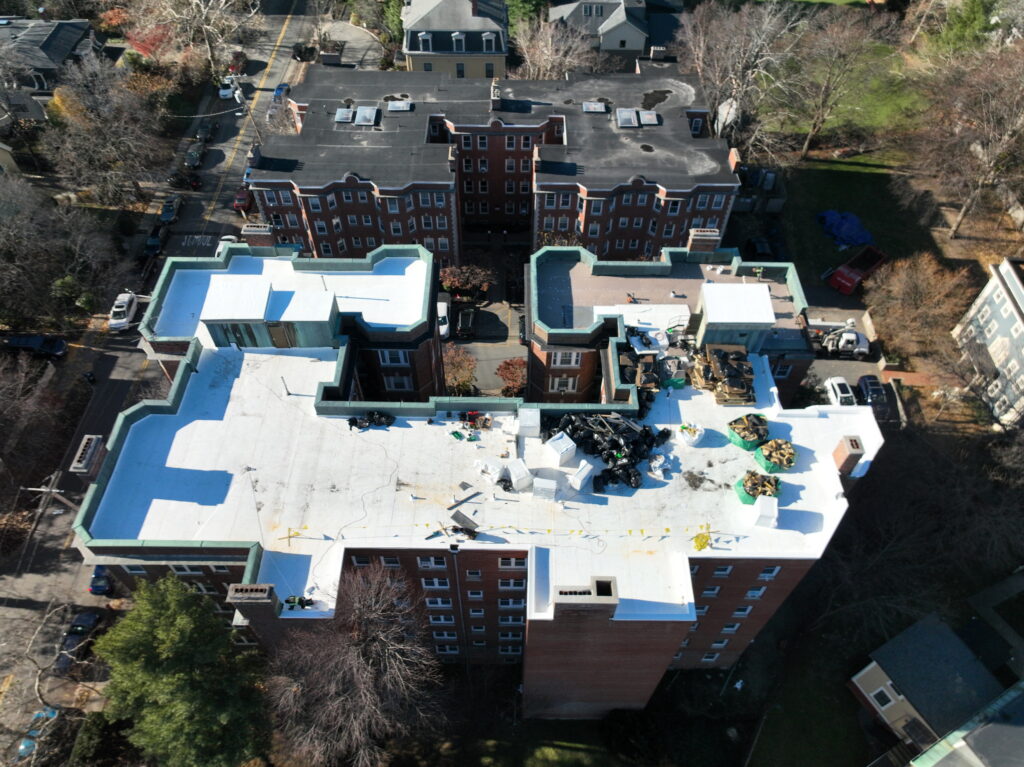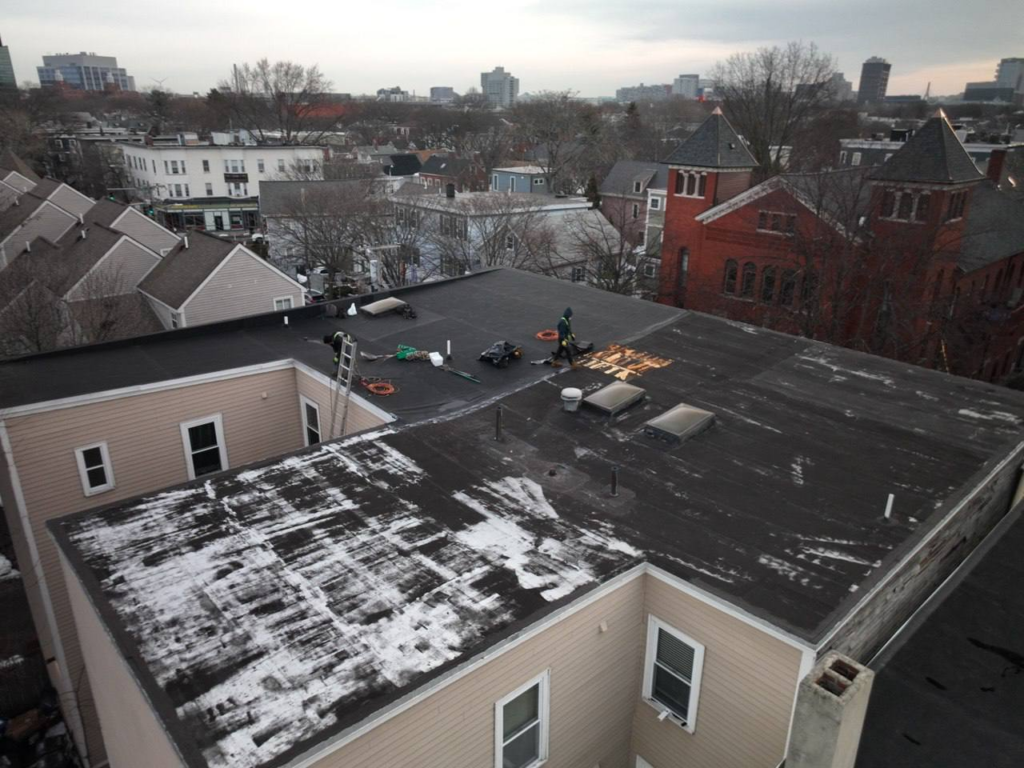PVC Roofing: Benefits, Challenges, and Maintenance Tips
Reading Time: 11 minutesPVC roofing is made from polyvinyl chloride and is great for flat and low slope roofs. When considering cold and PVC, it’s important to understand the benefits, challenges, and maintenance tips to help you decide if it’s right for your roof.
Black Mold and PVC Roofs: A Health Risk
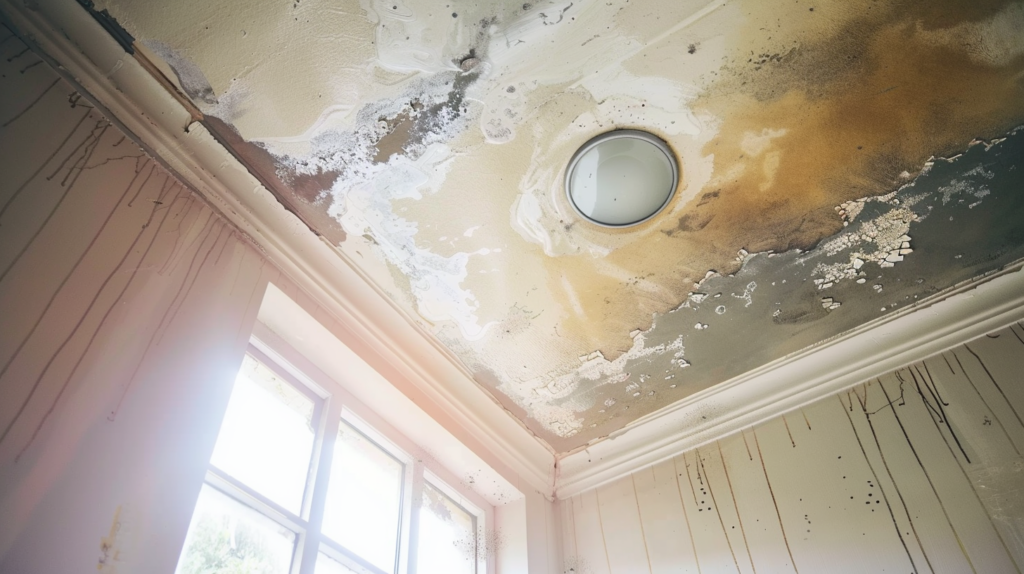
Black mold is more than just an eyesore; it’s a health risk, often exacerbated because of a leaking roof. Exposure to mold in damp environments can cause various health problems, respiratory issues, and allergic reactions. Mold loves to grow in humid areas like bathrooms and kitchens and near leaking pipes.
Roof leaks significantly contribute to mold growth, particularly in hidden areas like behind walls. When mold spores are released into the air, they can trigger health concerns, especially in individuals with weakened immune systems. Understanding the risks of mold exposure is crucial for maintaining a healthy home environment.
Health Risks of Black Mold

Black mold has many health risks and can affect people differently depending on their sensitivity. Common symptoms are sneezing, runny nose, throat irritation, and itchy eyes. For those with asthma or mold allergies, exposure to mold can worsen symptoms and lead to severe respiratory problems.
People with severely compromised immune systems are at higher risk of serious infection from mold exposure. Black mold can cause serious health problems, so it’s important to address mold growth quickly and correctly.
Preventing mold growth by controlling indoor humidity and fixing water leaks is the key to your health.
How to Identify Black Mold
First you need to identify black mold. Mold can get into your home through open doors, windows, vents, HVAC systems, clothing, shoes and pets. Once inside mold spores can multiply quickly in damp areas and grow visible mold. Roof leaks are a common cause of moisture issues and water can seep into hidden areas like behind walls and ceilings creating a mold perfect environment.
This compromises your home’s structure and is a health risk. Mold spores in the air can cause allergic reactions and respiratory issues and exacerbate asthma symptoms especially in people with weakened immune systems. You need to address roof leaks ASAP to prevent mold from growing and spreading throughout your home.
If you see visible mold growth there’s no need to sample for mold. Mold usually appears as black or greenish-black spots in areas of high humidity or water damage. Homeowners should look for these moldy areas to prevent further spread and address the underlying moisture issues.
Installing PVC Roofing to Prevent Mold: Benefits in Cold Climates
One way to prevent mold growth and the health risks that come with it is to install a quality PVC roof. PVC roofing is known for its durability and leak resistant which are often the cause of moisture buildup and mold growth in homes. By choosing PVC roofing you can minimize water penetration and have a dry mold free environment.
PVC roofing’s construction and watertight seal prevents rain and snow from getting into your home and protects it from the outside. This is key to your home’s structure and to prevent the conditions for mold to grow. By investing in a quality PVC roof you’re not only protecting your home from mold but also its overall life and performance.
What is PVC Roofing: Key Facts About Cold and PVC Compatibility
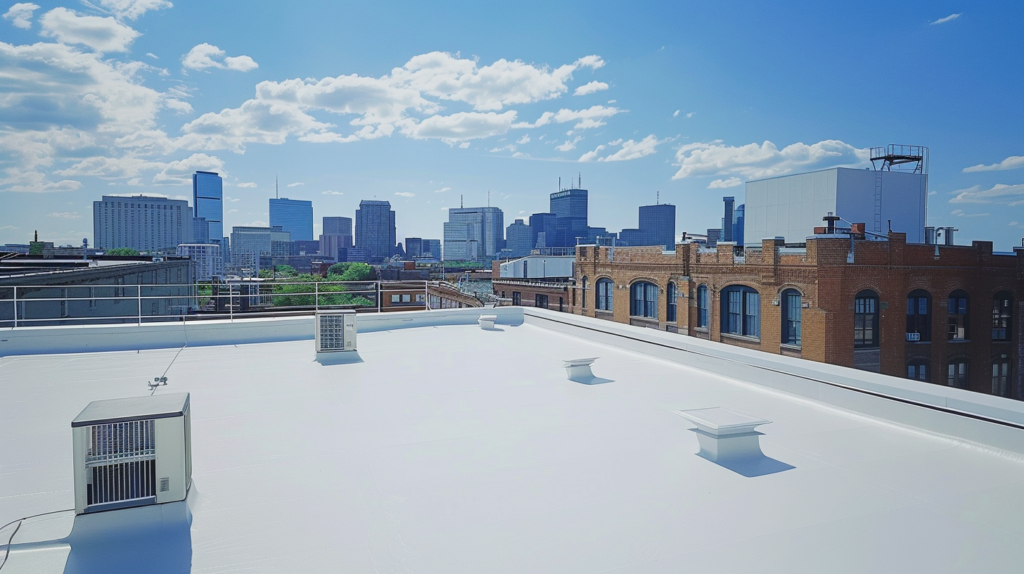
PVC roofing is a modern wonder. Made from polyvinyl chloride this single ply roofing material is strong and flexible. Unlike asphalt shingles PVC roofing has a unique combination of strength and flexibility that’s great for flat and low slope roofs.
PVC Roofing and Winter
PVC roofing is winter-friendly due to its durability and flexibility. Unlike asphalt shingles which can get brittle and prone to damage in cold weather, PVC roofing remains intact and performs well even in freezing temperatures. It’s perfect for areas that have harsh winters.
PVC roofing’s flexibility allows it to expand and contract with temperature changes, reducing the chances of cracks and leaks. Its robust composition with additives and reinforcement can withstand heavy snow loads and strong winds, common during winter season.
Also, PVC roofing’s reflective properties reduces heat absorption which can help minimize ice dam formation on the roof. By preventing excessive ice buildup, homeowners can avoid water leaks and structural damage.
Proper maintenance during winter like clearing snow and ice can further extend the life and performance of PVC roofing. Overall, PVC roofing gives you protection and peace of mind during the coldest months, it’s a smart investment for those looking for a durable roofing solution.
Benefits of PVC Roofing
One of the biggest benefit of PVC roofing is its strength. It can withstand over 350 pounds per square inch and is designed to withstand harsh conditions without compromising its integrity. This means less roof leaks and less repairs compared to asphalt shingles which can be damaged easily.
Another benefit of PVC roofing is its longevity. With a life of 20 to 30 years it outlasts many other options in the market. Proper maintenance extends its life even more making it a cost effective investment in the long run. Homeowners and business owners alike appreciate the peace of mind knowing their roof will provide protection for decades.
Plus the composition of PVC roofing has additives and reinforcement that enhances its performance. These additives makes the roofing membrane resistant to chemicals, fire and strong winds and makes it a top of the line roofing material. Compared to asphalt shingles the benefits of PVC roofing is more apparent.
Challenges of PVC Roofing
While PVC roofing is celebrated for its durability and resistance to mold growth, it does come with its own set of challenges. One significant issue is its susceptibility to damage from extreme weather conditions. High winds and hail can cause considerable harm to PVC roofs, leading to potential leaks and structural issues. Additionally, over time, PVC roofing can become brittle, especially when exposed to cold surfaces and cold weather. This brittleness can result in cracks, which compromise the roof’s integrity and necessitate repairs.
Another challenge is the cost. PVC roofing tends to be more expensive than other materials, such as asphalt shingles. While the initial investment is higher, the long-term benefits often outweigh the costs, but this can still be a significant drawback for some homeowners. Understanding these challenges is crucial for making an informed decision about whether PVC roofing is the right choice for your home.
Applications
PVC roofing’s flexibility makes it a popular choice for many applications. It’s used in residential and commercial buildings especially those with flat or low slope roofs. Its lightweight nature makes it easy to install without additional structural support which is a big consideration in many projects.
Commercial buildings like retail spaces, restaurants and industrial facilities use PVC roofing because of its superior waterproofing and windproof capabilities. Its chemical resistance and ability to withstand extreme temperature makes it ideal for industrial use where durability and low maintenance is key. This versatility makes PVC roofing a go to choice for many types of buildings.
PVC Roofing Materials and Installation
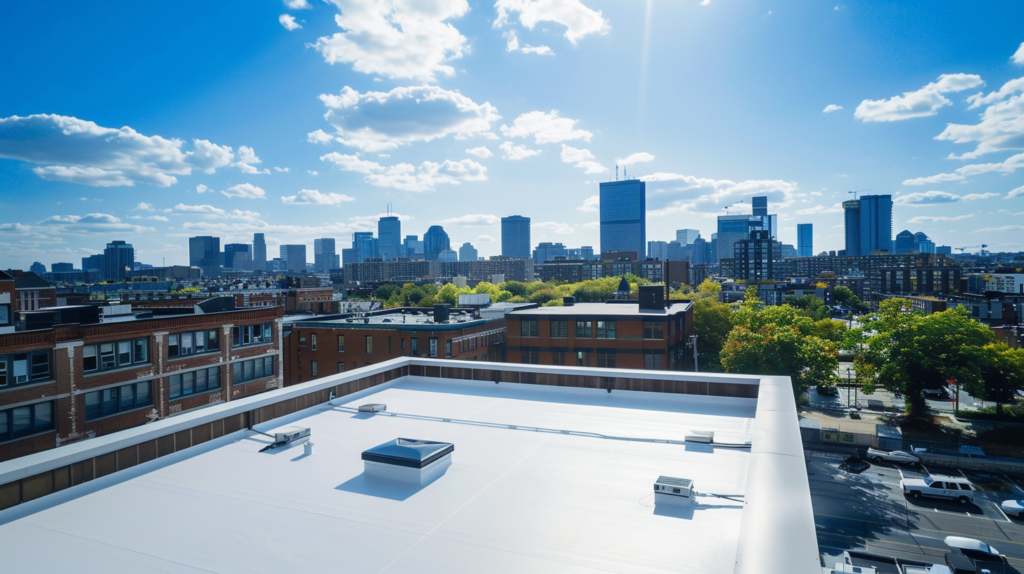
PVC roofing materials are crafted from a blend of polyvinyl chloride and various additives, including plasticizers and stabilizers. These components work together to create a robust and waterproof barrier that can withstand the elements. The installation process for PVC roofing is specialized and involves welding the seams to form a watertight seal. This method requires skilled labor and specialized equipment, which can increase the overall cost of installation.
However, the investment in proper installation pays off in the long run. When installed correctly, PVC roofing offers a long-lasting and low-maintenance solution. Its durability and resistance to mold growth make it an excellent choice for homeowners looking for a reliable roofing option. Ensuring that the installation is done by experienced professionals is key to maximizing the benefits of PVC roofing.
Environmental Impact of PVC Roofing: Considerations for Cold and PVC Performance
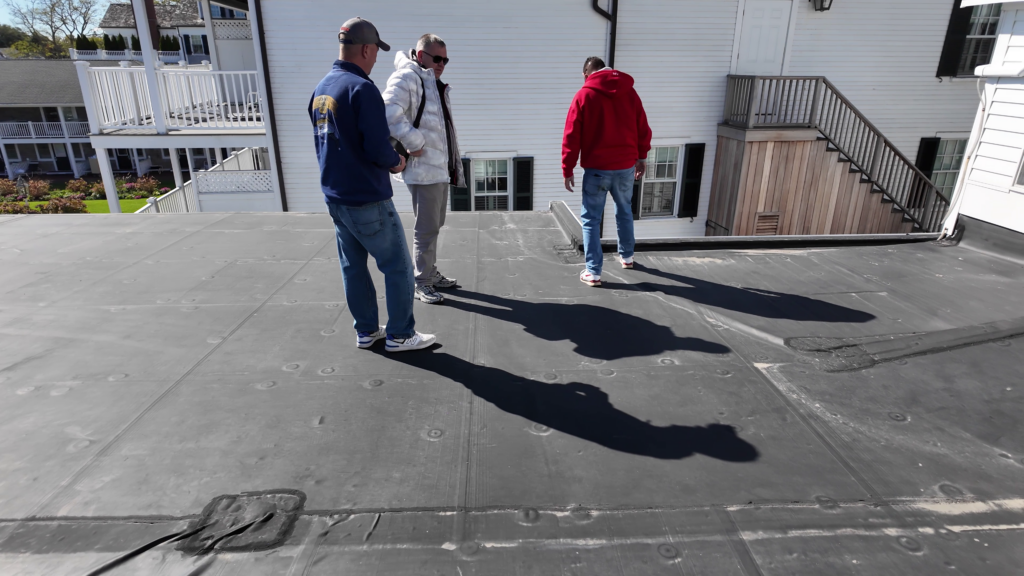
The environmental impact of PVC roofing is a topic of concern, particularly regarding its production process. The manufacturing of PVC roofing materials relies on non-renewable resources like petroleum and natural gas, contributing to greenhouse gas emissions and climate change. Additionally, some PVC roofing materials contain additives such as lead and cadmium, which can be harmful to both humans and the environment.
However, the industry is evolving, and many manufacturers are now producing more environmentally friendly PVC roofing options. These include materials made from recycled content and those designed to be recyclable at the end of their lifespan. By choosing these greener options, homeowners can reduce the environmental footprint of their roofing projects while still enjoying the benefits of PVC roofing.
Cost and ROI of PVC Roofing
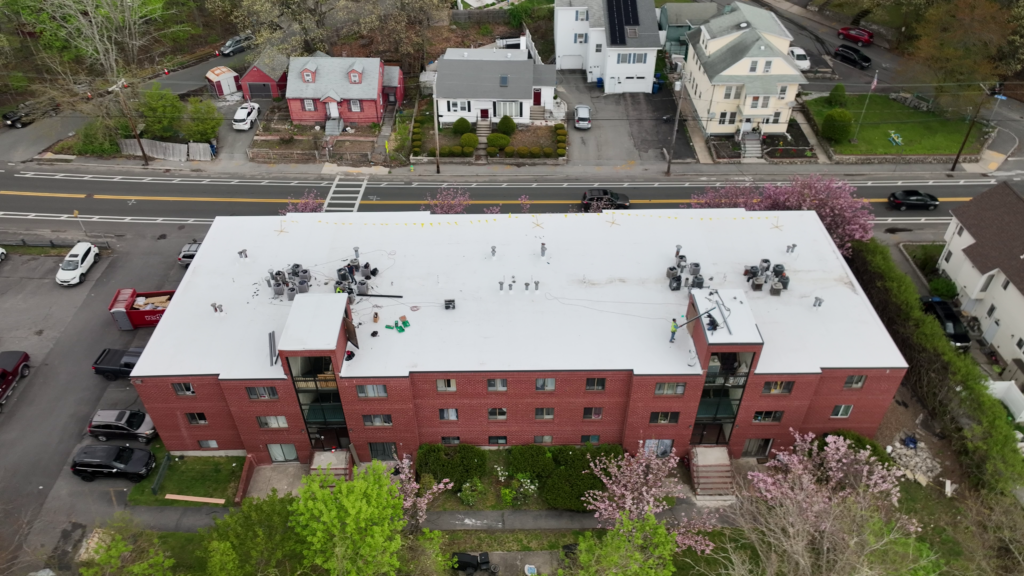
The cost of PVC roofing can vary, but it generally ranges between $6 and $12 per square foot, making it more expensive than traditional asphalt shingles. Despite the higher upfront cost, PVC roofing offers significant long-term advantages. Its durability and low maintenance requirements can lead to lower overall costs over the roof’s lifespan.
Moreover, PVC roofing can provide a higher return on investment (ROI) compared to other materials. In areas prone to high winds and extreme weather conditions, the resilience of PVC roofing can result in fewer repairs and replacements, translating to cost savings. Some studies suggest that PVC roofing can offer an ROI of up to 10% per year, making it an attractive option for homeowners seeking a durable and long-lasting roofing solution.
By considering the initial costs and long-term benefits, homeowners can make an informed decision about investing in PVC roofing. The combination of durability, low maintenance, and potential cost savings makes it a compelling choice for those looking to protect their homes effectively.
Act Fast on Roof Repairs: Prevent Issues with Cold and PVC
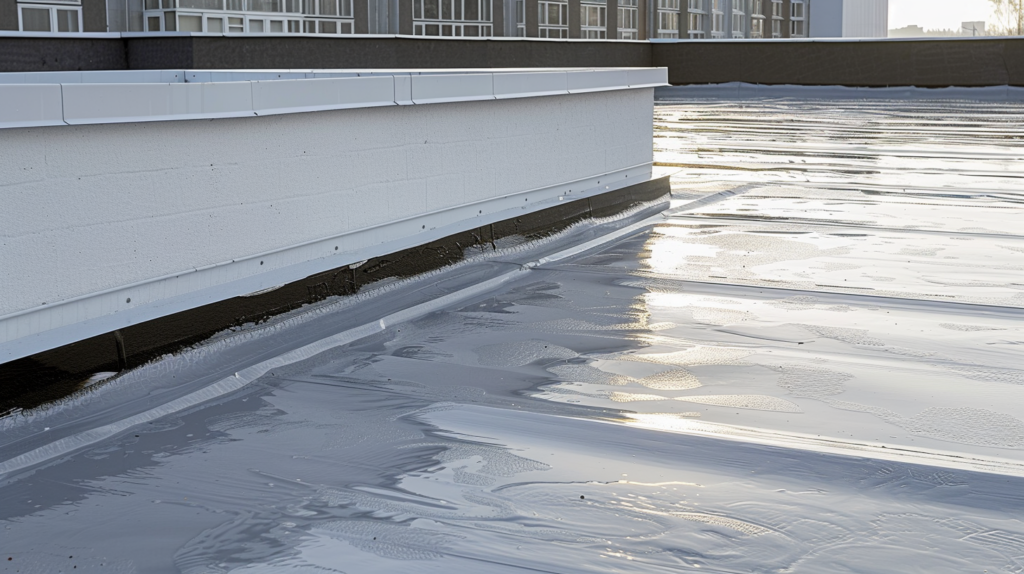
Roof repairs should be addressed promptly in home maintenance. Delaying repairs can lead to bigger problems like extensive water leaks that can damage your home’s structure and interior. Acting on roof problems fast reduces the cost of repairs and ensures safety and longevity of your property.
Cold weather can aggravate existing roofing problems especially with materials like PVC that can become brittle. Replacing the roof ASAP in such condition can prevent complications and keep your home protected from the elements. Ignoring these problems can lead to damp ceilings which can compromise the structure of the building and is a serious health risk.
Cold Surfaces and PVC: Why Replace ASAP
The term “cold and PVC” means roof problems should be addressed during colder months. Cold temperature can make PVC roofs brittle and if repairs are delayed can cause significant damage. This brittleness can lead to cracks and leaks and if left unattended can cause water damage.
Replacing PVC roof during cold weather is important to avoid these complications. Waiting until spring may seem like an easy solution but the risks of delayed repairs is too big to ignore. By acting fast homeowners can prevent further deterioration and keep their roofs in top shape.
Damp Ceilings and Structures: Addressing Issues with Cold and PVC Solutions
Damp ceilings can cause severe structural damage if not addressed immediately. The moisture weakens the ceiling tiles and other structural elements and compromise the overall structure of the building. This can lead to costly repairs and serious health risks due to mold growth.
Roof leaks is a common cause of damp ceilings and addressing these leaks fast can prevent extensive damage. Delaying repairs during cold weather can worsen the problem and lead to higher repair cost and more complex structural issues. Homeowners should be on the lookout for damp spots on their ceiling to preserve their home’s integrity.
Prevent Mold Growth and Manage Moisture
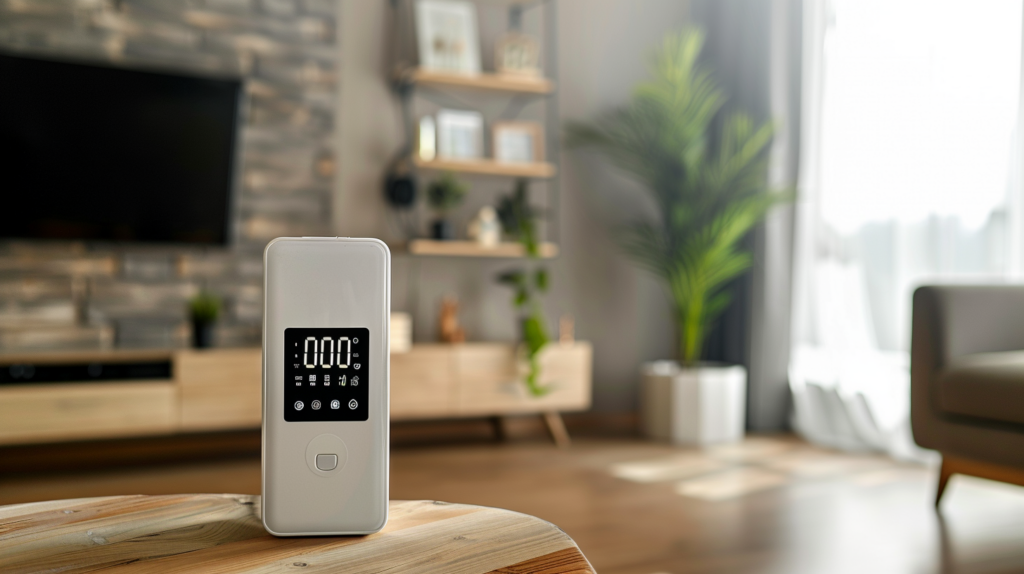
Preventing and managing moisture is key to no mold growth and a healthy home. Timely roof repairs can prevent severe structural damage and costly renovations due to prolonged exposure to elements. Addressing roof issues fast can preserve both the structure and appearance of your home.
Controlling indoor moisture is key to prevent mold growth. Understanding how much mold is problematic is crucial, as different levels of mold can lead to various health issues. This will maintain a healthy environment in your home. Identifying and addressing moisture issues fast can prevent mold from growing. Regular maintenance and better ventilation can keep damp areas dry and mold free.
Indoor Humidity: Managing Moisture with PVC in Cold Weather Roofing Solutions
Controlling indoor humidity is key to prevent mold growth and a healthy environment. Using exhaust fans and air conditioners can reduce humidity indoors and control moisture. PVC roofing’s reflective properties can also reduce heat absorption and lower cooling costs and keep indoor air quality healthy.
Proper ventilation is important to reduce moisture and prevent mold growth. By having good airflow and using dehumidifiers when needed, homeowners can control humidity and reduce condensation which is important for mold prevention.
Water Leaks: How Cold and PVC Roofing Handle the Challenge
Fixing water leaks is a must to prevent mold growth. Renters should report plumbing leaks to the building owner or manager to have it fixed ASAP. Unaddressed water problems can lead to severe mold issues and may require contacting local, state or federal health or housing authorities for help.
Water leaks can come from many sources like roof leaks, plumbing leaks and air conditioning drip pans. Addressing these leaks fast can prevent moisture buildup and reduce mold growth.
Home improvement and hardware stores have solutions and tools to help homeowners fix minor leaks and reduce condensation.
Maintenance Tips
Regular maintenance is key to prevent mold growth and to keep your home in top shape. Mold grows in areas with excessive moisture like roof leaks and walls. Homeowners should be on the lookout for signs of hidden mold like musty smell, water stains and health complaints from residents.
Materials like wood, drywall and ceiling tiles are prone to mold growth. Inspect these areas regularly for water damage and address issues fast to keep it mold free.
Hidden mold may be behind carpets, wallpaper, around pipes and inside ductwork if you suspect hidden mold.
Damp Ceilings and Black Mold
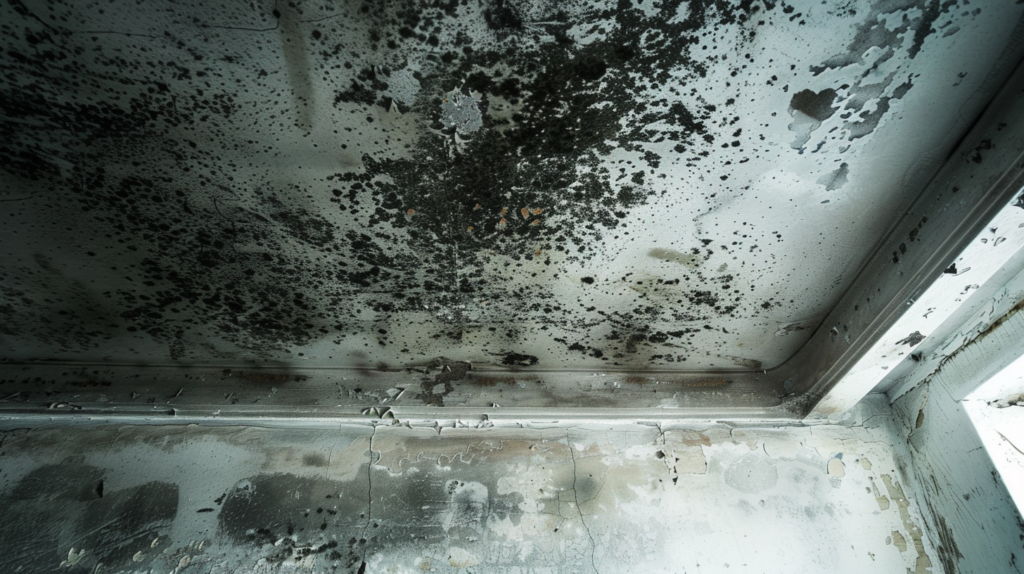
Damp ceilings and black mold is serious and needs to be addressed ASAP. Addressing these issues fast can prevent severe structural damage and health risks. Mold spores can spread fast and can lead to massive mold growth that’s hard to remove. Clean up mold and fix the moisture issue to prevent mold from coming back.
Professionals should do mold testing to determine the scope of the problem. Surface sampling can verify if a specific area has been cleaned properly. It’s a good way to measure cleanliness. Proactive measures help homeowners manage mold issues and have a healthy living space.
DIY Mold Cleanup
For those who want to do mold cleanup themselves, here are the steps to follow. A DIY mold cleanup guideline is to limit the area to less than 10 square feet. Always wear protective gear like gloves and mask to prevent mold exposure and skin contact during the cleanup process.
Bleach solution can remove mold on hard surfaces. But cleaning mold can cause staining and cosmetic damage to surfaces. Address the moisture issue to prevent mold from growing back.
If the mold problem is big, professional mold remediation services may be needed.
Denis Tchernov’s PVC Roofing Expertise
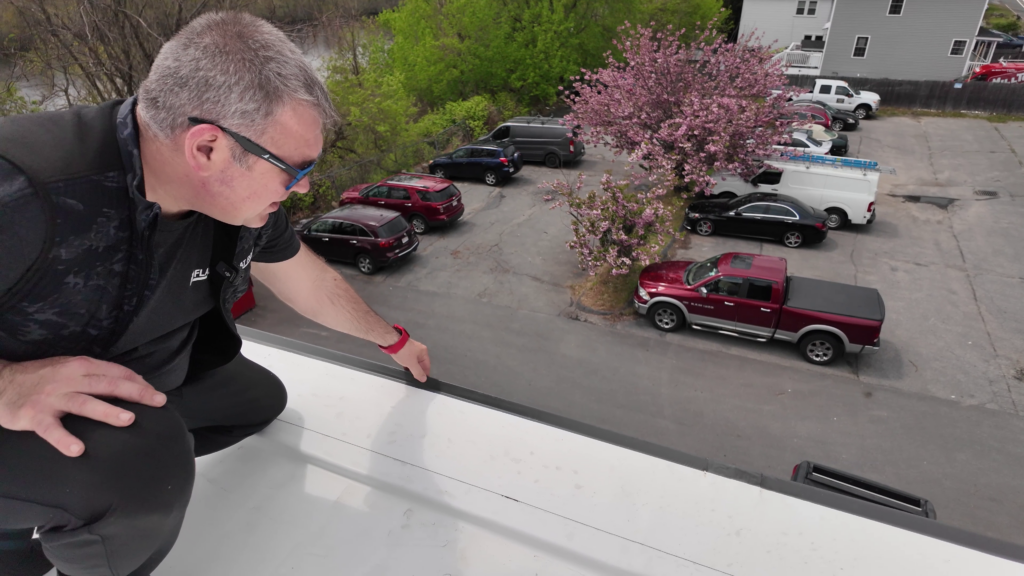
Denis Tchernov, a general contractor with over 20 years of experience in the roofing industry, is a expert for both residential and commercial PVC roofing.
He ensures every project meets high quality and customer satisfaction standards.
About Denis Tchernov
With over 20 years in the roofing industry, Denis Tchernov’s passion for excellence and continuous learning makes him a go to contractor for various roofing needs including PVC roofing in Massachusetts.
Focused on customer satisfaction, Denis has built a reputation for reliable and high quality roofing services.
Services
Denis Tchernov and ID Flat Roof offers full range of roofing services including PVC roof installation and emergency repair. His expertise extends to innovative solutions like skylights and solar PV roofing, giving clients modern and efficient options to upgrade their homes. His commitment to quality and attention to detail ensures every project is done to perfection.
Clients love his straightforward communication and promise keeping. Whether it’s regular installation or emergency roof repair, his services cater to different needs so homes and businesses are protected and efficient.
Understanding the Basics of Flat Roof: Read Now
Massachusetts Commercial Roof Gutter Installation: Code Requirements and Best Practices
Finding Reliable Roof Leak Repair Services
High-Quality PVC Roof Installation at 23 St Marys Ct, Brookline, MA
Understanding Hail Damage: Causes and Solutions
Comprehensive Roofing Renovation at 7 Craigie Circle, Cambridge, MA
Efficient White PVC Roof Installation at 54 Solaris Rd, Hyde Park, MA
Conclusion
In summary, PVC roofing is durable, cost effective and versatile for both residential and commercial use. It can withstand harsh weather and has a lifespan of 20 to 30 years. Address roof issues fast especially during cold weather to prevent further damage and extend your roof’s life.
Mold especially black mold is a health risk and structural issue. By controlling indoor humidity, fixing water leaks and doing regular maintenance, homeowners can prevent mold growth and have a healthy living space. Denis Tchernov’s PVC roofing expertise is an added layer of protection, high quality services for your roofing needs. Act now and protect your home and yourself.
Denis is the driving force behind ID Flat Roof, a leading company in Boston specializing in flat roof repair and installation for over 20 years.
Expertise:
Denis excels in PVC, TPO, EPDM, and rubber roofing. His meticulous approach ensures quality and customer satisfaction.
Innovation:
Denis incorporates cutting-edge solutions like skylights and solar PV roofing.




